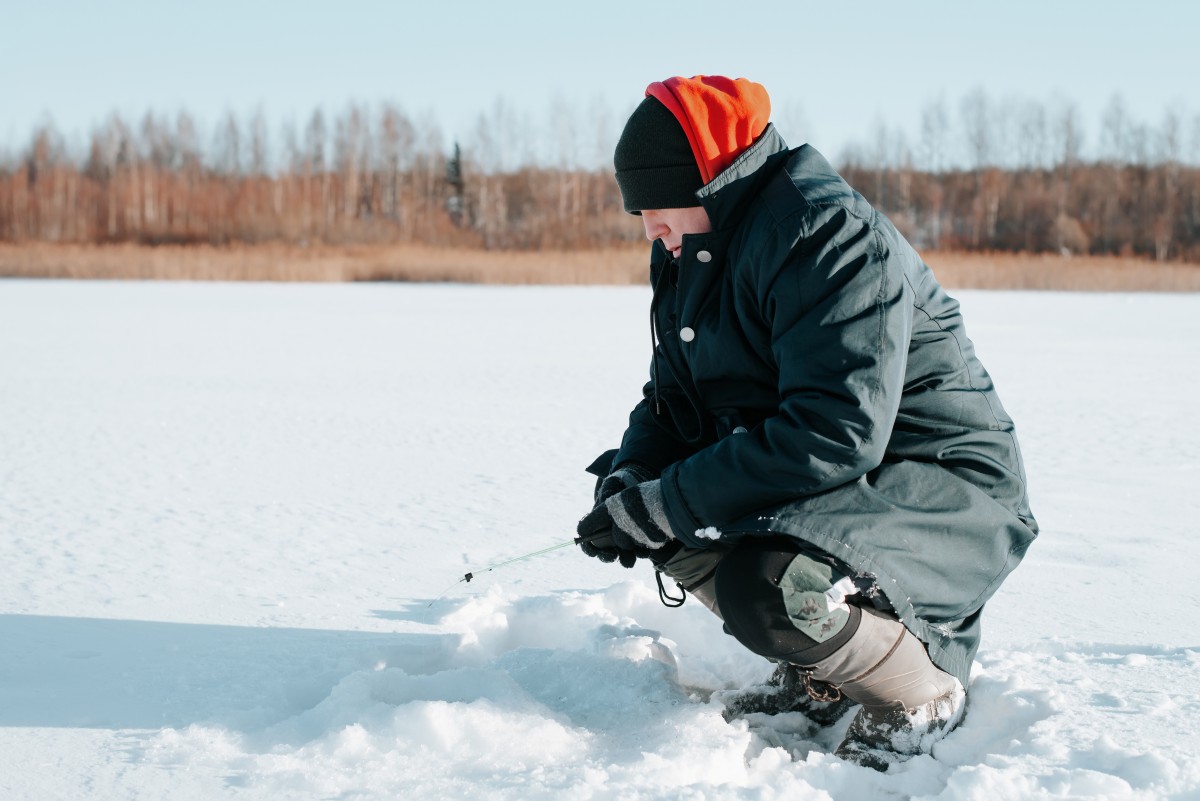Essential Gear for Iowa Ice Fishermen

Essential Gear for Iowa Ice Fishermen
Jigs & Bait
When the lakes freeze over in Iowa, ice fishing season begins, and having the right tackle can make the difference between a slow day and a full bucket. One of the most essential pieces of gear is a good selection of jigs. These small lures can be used to target everything from bluegills to walleye.
For smaller panfish like bluegill, crappie, and perch, tiny jigs are key. Common styles include teardrop, tungsten, and horizontal jigs. Sizes typically range from 1/64 to 1/16 ounce, and tungsten jigs are especially popular because their extra weight helps get the bait down quickly and stay in the strike zone, even in deeper water. Bright colors such as chartreuse, pink, white, and glow patterns work well, especially in stained water or low light. Tipping these jigs with waxworms, spikes, or small soft plastics can entice finicky fish to bite.
When targeting larger species like walleye, northern pike, or even big bass, upsizing your tackle is important. Heavier jigs in the 1/8 to 1/4 ounce range help get down quickly and give better control in deeper or current-influenced water. Vertical spoons, jigging raps, and larger minnow-style jigs are effective for drawing aggressive strikes. Natural finishes like silver, gold, and perch patterns often excel in clear water, while glow and bright colors stand out during low light or cloudy days.
Carrying a mix of jig sizes, shapes, and colors allows you to adapt to changing conditions and fish preferences. Start small and subtle for finicky panfish, then move up in size and flash for bigger predators. With a well-stocked tackle box and a bit of experimentation, you’ll be ready to handle whatever bites beneath the Iowa ice.
Live bait is a go-to way to attract fish under the ice. In Iowa, common choices include waxworms, spikes, and minnows. Waxworms and spikes work well on small jigs for panfish like bluegills and crappies, adding scent and subtle movement that entice bites. Minnows are ideal for larger predators like walleye, perch, and northern pike, either hooked through the lips on a jig or suspended below a tip-up. Keeping bait lively is key—cold but not frozen water helps maintain action.
Electronics, such as flashers or underwater cameras, help locate fish and monitor how they react to baits. These can be pretty helpful when trying to locate fish and figure out the depth they’re feeding.
Ice Shacks
Ice shacks, come in several styles. Flip-over shacks are popular with mobile fishermen. These shelters are attached to a sled, allowing you to pull their gear out easily, then “flip” the shelter over to create instant cover. They’re great for hopping from hole to hole.
Hub-style shelters resemble pop-up hunting blinds. They’re lightweight, pack down small, and offer plenty of interior space, making them ideal for groups or extended sits. Setup is quick, and many have insulated walls for extra warmth.
Each style has its advantages: flip-overs for mobility, hubs for flexibility and space, and permanent shacks for maximum comfort. The best choice depends on how often you move, the conditions you fish in, and your personal preferences.
Beyond lures and shelters, Iowa ice fishermen rely on a variety of essential gear to stay safe, efficient, and comfortable on the ice.
Augers
Augers are a must for drilling holes. Hand-crank augers are lightweight, quiet, and inexpensive. They are perfect for shallow ice or anglers who don’t need to drill many holes. They require physical effort, which can be tiring, but they are reliable, low-maintenance, and easy to transport.
Electric augers run on rechargeable batteries and offer a quieter, low-maintenance option compared to gas. They are ideal for small to medium holes, and modern models are surprisingly powerful, often drilling 8–12 inches of ice quickly. Battery life can be a limiting factor, so carrying spare batteries is recommended.
Gas-powered augers are the choice for anglers drilling multiple holes or dealing with thick ice. They provide consistent power and can cut through ice faster than hand or electric augers. They are heavier, noisier, and require fuel and maintenance, but they make quick work in deep ice conditions.
Drill-adapter augers allow you to attach the auger bit to a standard cordless drill. They are compact and convenient, great for small holes or occasional ice fishing. The downside is limited power, especially in thick ice, but it saves a lot of time and effort when compared to the hand-crank augers.
When selecting an auger, consider the ice thickness, number of holes you’ll drill, and portability needs. Blade quality, durability, and ease of sharpening also matter. In Iowa, where ice thickness can vary widely, many anglers keep a backup hand auger even if they rely on gas or electric for most of the work. A good auger ensures efficiency, safety, and a more enjoyable day on the ice.
Safety Gear
Lastly, don’t forget safety gear. Ice cleats will keep you upright and ce picks worn around the neck can be a literal life saver if you go through the ice. At bare minimum, a throw rope can be lifesavers too. Ice safety is vital, so make sure the ice is thick enough and safe. Good luck this season!
By Jacob Dean
December 2025
For Cattle and Dairy info links below:

